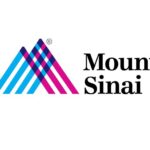Speaking on the company’s first-quarter earnings call in April, Merck & Co. [NYSE: MRK] chairman and CEO Robert M. Davis sought to reassure analysts that the company was very much interested in growing through mergers and acquisitions (M&A) despite an uncertain economic climate that has dampened dealmaking among biopharmas.
“I am confident that you are going to see us get some stuff done as we move forward because we’ve got things in the queue that we’re looking for,” Davis said, according to Merck’s transcript of the call.
One of those things appears to be Swiss-based MoonLake Immunotherapeutics (NASDAQ: MLTX). This past week, MoonLake shares surged 31% after the Financial Times, citing unnamed sources, reported that the company had rejected an initial acquisition offer by Merck for more than $3 billion. Both companies declined to comment.
“The price tag would have to be much higher than the ~$3.2B mkt cap [market capitalization] that MoonLake is currently trading at,” opined Edward Nash, Canaccord Genuity’s biotechnology senior analyst specializing in metabolic disease and immunology and inflammation (I&I), in a June 3 research note. Nash based his thinking on how MoonLake’s market cap—the product of the share price and the number of outstanding shares—has grown from $2.6 billion since Merck’s offer was announced.
MoonLake shares climbed 5.5% from $39.01 to $41.16 on June 2, the day news of Merck’s interest in MoonLake surfaced, then jumped another 24% over two days to $51.05 Wednesday before fading 4% to $48.83 Thursday and dropping another 4% Friday to $46.88.
Merck shares dipped 0.8% on June 2 from $76.84 to $76.25, then rose nearly 3% over two days to $78.27 on Wednesday before dipping another 0.8% to $77.67 on Thursday, followed by a 1.6% increase Friday to $78.93.
MoonLake’s pipeline consists of nine programs focused on developing a single drug— sonelokimab, a humanized Nanobody® designed to selectively bind with high affinity to IL-17A and IL-17F, thereby inhibiting the IL-17A/A, IL-17A/F, and IL-17F/F dimers that drive inflammation. Sonelomimab, previously known as M1095 or ALX-0761, is just ~40 kDa small and consists of three VHH domains covalently linked by flexible glycine-serine spacers.
Sonelokimab is under study in five Phase III trials—two in hidradenitis suppurativa (HS), one in adolescent HS, and two in psoriatic arthritis (PsA). Sonelokimab is also Phase III ready for psoriasis and is in Phase II trials for three additional I&I indications: Palmoplantar pustulosis (PPP), axial spondyloarthritis (axSpA), and a combination indication of PsA + axSpa.
September inflection point
Brian Abrahams, MD, a managing director and co-head of biotechnology research with RBC Capital Markets wrote in a research note that if Merck or another company were to acquire MoonLake, it would not likely occur until at least September, when MoonLake expects to report primary endpoint data for its three Phase III HS trials: VELA-1 (NCT06411899), VELA-2 (NCT06411379), and VELA-TEEN (NCT06768671).
VELA-1 and -2 are parallel identical trials designed to compare a single 120 mg dose of sonelokimab to placebo with the primary endpoint being a 16-week readout of Hidradenitis Suppurativa Clinical Response (HiSCR) 75, a ≥75% reduction in total abscess and inflammatory nodule count, with no increase in abscess or draining tunnel count relative to baseline. From week 16, all patients will receive the 120 mg dose of sonelokimab through to 52 weeks, followed by an open-label extension for up to two years.
VELA-TEEN is an open-label, single-arm trial with the primary endpoint to evaluate the pharmacokinetics, safety, and tolerability of the 120 mg subcutaneous (SC) dose of sonelokimab over 24 weeks in 30 to 40 adolescents ages 12–17, with moderate-to-severe HS, from U.S. sites with experience in pediatric dermatology.
“We continue to believe SLK [sonelokimab]’s data will be robust enough (22–24% [placebo]-adjusted HiSCR75) to reaffirm potential competitive advantages and a key role in the multi-$B market—driving substantial share appreciation and crystallizing a compelling profile for both investors and potential acquirers,” Abrahams wrote.
Those advantages, he elaborated, include potential best in class efficacy based on MoonLake’s data from the Phase II MIRA trial (NCT05322473), which showed 29% placeb-adjusted efficacy on HiSCR75 at the go-forward 120 mg dose level, and 38% at the standard of HiSCR50 (≥50% reduction), outperforming historical results from two currently marketed blockbuster drugs, AbbVie’s Humira® (adalimumab) and Novartis’ Cosentyx® (secukinumab).
Similar affinity
Among IL-17A/F inhibitors, Abrahams wrote, sonelokimab could differentiate itself from UCB’s marketed drug Bimzelx® (bimekizumab), whose label was expanded to HS last year, standing out based on a similar affinity for IL-17A and F, a smaller molecular size enabling it to penetrate deep avascular HS lesions, and a targeting of distinct epitopes on IL-17A and F, rather than the largely overlapping epitope targeted by Bimzelx.
“We believe SLK is highly likely to demonstrate a 22–24% [placebo]-adjusted HiSCR75 delta. We believe this result would differentiate SLK vs. Bimzelx and could see [MoonLake’s] stock move 70%+ to the upside,” Abrahams said.
That would translate, he said, into a share price of more than $110 a share, with 30% to 40% of that price added on because of interest from potential buyers like Merck.
MoonLake launched in May 2021 by acquiring sonelokimab in 2021, licensing the drug from Merck KGaA, Darmstadt, Germany, for $29.9 million, with MoonLake issuing equity to German Merck, representing a 9.9% ownership stake in a MoonLake subsidiary. Three months later, founder Jorge Santos da Silva, a former senior partner with McKinsey & Co., was named CEO.
According to its Form 10-K annual report for 2024 filed February 26, MoonLake agreed to pay German Merck milestone cash payments of up to €307.1 million (about $350 million), of which €7.5 million ($8 million) had been recognized as R&D expense as of the end of 2024. MoonLake also agreed to pay additional future payments tied to achieving regulatory filing acceptances in the United States, the European Union, and Japan; the first commercial sales in all three regions; and meeting specified annual thresholds in global net sales. The deal also requires MoonLake to pay royalties in the low to mid-teen percent of net sales to German Merck.
As for Merck, the potential buyer, one factor believed to be fueling its interest in MoonLake is its estimate that the total market for HS biologic treatments will grow from $2 billion-plus to between $10 billion and $15 billion by 2035.
While MoonLake has not estimated how much of that total it expects to generate from sonelokimab, TD Cowen has offered its own peak-sales forecast for sonelokimab, with analyst Phil Nadeau projecting $4 billion-plus in peak sales.
Losing exclusivity
Such a forecast would likely prove appealing to Merck at a time when its two biggest blockbuster franchises face loss of patent exclusivity in coming years: Gardasil/Gardasil 9 (Human Papillomavirus Quadrivalent (Types 6, 11, 16, and 18) and Keytruda® (pembrolizumab) will all see their U.S. patents start to expire in 2028, though Keytruda is protected by two additional patents in the compound family that have an additional year of exclusivity—patents that Merck cautioned in its Form 10-K annual filing for 2024 that it “expects that they will be the subject of litigation in the future.”
Keytruda was last year’s top-selling drug with sales of $29.482 billion, while Gardasil/Gardasil 9 racked up $8.583 billion.
Investors are looking for Merck to recoup the lost revenues through more and bigger acquisitions. Since last year, Merck has acquired three companies in relatively small “bolt-on” deals: EyeBio (for $1.3 billion upfront and potentially up to $3 billion overall), Abceutics (for up to $208 million), and Harpoon Therapeutics (for about $680 million).
One factor slowing down potential additional buyouts, Merck CEO Davis told analysts on the Q1 earnings call, is coming to terms with sellers on the value of companies to be acquired.
“We continue to see, at least in the conversations we’ve had, a little bit of a disconnect between what is the reality of the market that the sellers face and what is the expectation for value that they have. I don’t think they are fully yet aligned to the realities of where we are today.”
Despite that tug-of-war, Davis added, “it’s not stopping us from being aggressive and wanting to move forward and do deals.”
“I think you’ll see us continue to do a range of opportunities which cover the full spectrum. Because as we look at it, it’s about how do we position ourselves for growth. And in some cases, in some of these therapeutic areas, we think there’s still unmet need.”
Leaders and laggards
- Liminatus Pharma (NASDAQ: LIMN) shares more than quadrupled, zooming 364% over two days after the company said Wednesday it regained compliance with Nasdaq’s rule requiring timely filing of reports with the U.S. Securities and Exchange Commission, based on a letter received Tuesday from the exchange stating that the matter was now closed. Shares more than doubled, leaping 140% Wednesday from $5.30 to $12.71, then nearly doubled again, soaring another 94% to $24.60.
- Lyra Therapeutics (NASDAQ: LYRA) shares more than quadrupled, catapulting 311% from $4.93 to $20.25 on June 2 after the company reported positive results from its Phase III ENLIGHTEN 2 trial (NCT05295459) evaluating LYR-210 in adults with chronic rhinosinusitis (CRS). ENLIGHTEN 2 met its primary endpoint, with LYR-210 demonstrating statistically significant improvement (-1.13) compared with sham control in a composite of the three cardinal symptoms (3CS) of CRS (nasal obstruction, nasal discharge, facial pain/pressure) at week 24 in patients without nasal polyps. ENLIGHTEN 2 also met the key secondary endpoints of 3CS improvement (-0.90) at 24 weeks in patients with and without nasal polyps, and in the clinically validated Sino-Nasal Outcome Test (SNOT-22) score at 24 weeks (-8.7), with symptom improvement seen as early as week 4 (-6.4).
- Phathom Pharmaceuticals (NASDAQ: PHAT) shares nearly doubled, rising 90% from $4.69 to $8.92 Friday after the FDA granted the company’s Citizen Petition to recognize the full 10 years of New Chemical Entity (NCE) exclusivity for Voquenza® (vonoprazan) 10 mg and 20 mg tablets, extending through May 3, 2032. The petition, filed on December 11, 2024, called for correcting the FDA’s Orange Book to reflect the update, which will reflect the same period of NCE exclusivity that was granted upon approval of vonoprazan-based Voquenza Triple Pak® and Voquenza Dual Pak® in May 2022. The statutory 10-year exclusivity period encompasses a five-year standard exclusivity period for NCEs, extended by an additional five years through the Generating Antibiotic Incentives Now (GAIN) Act. Phathom focuses on developing and commercializing novel treatments for gastrointestinal (GI) disease.
- 23andMe Holding (OTCMKTS: MEHCO) shares climbed 24% from $3.96 to $4.92 Thursday after the company reached an agreement with former CEO Anne Wojcicki and Regeneron Pharmaceuticals (NASDAQ: REGN) to hold a second auction for the bankrupt direct-to-consumer genetic testing pioneer and its DNA data. The agreement came after Wojcicki said her nonprofit TTAM Research Institute, founded last month, planned to bid $305 million, after securing financial backing from an unnamed company valued at more than $400 billion, speculated to be Oracle (NYSE: ORCL). Regeneron agreed to acquire substantially all 23andMe’s assets for approximately $256 million after winning a competitive auction last month. Under the agreement, Regeneron can respond with a bid of at least $315 million, followed by the option of a final bid from Wojcicki and TTAM and the research institute. If that happens, Regeneron would have the option to offer the auction’s final bid.



